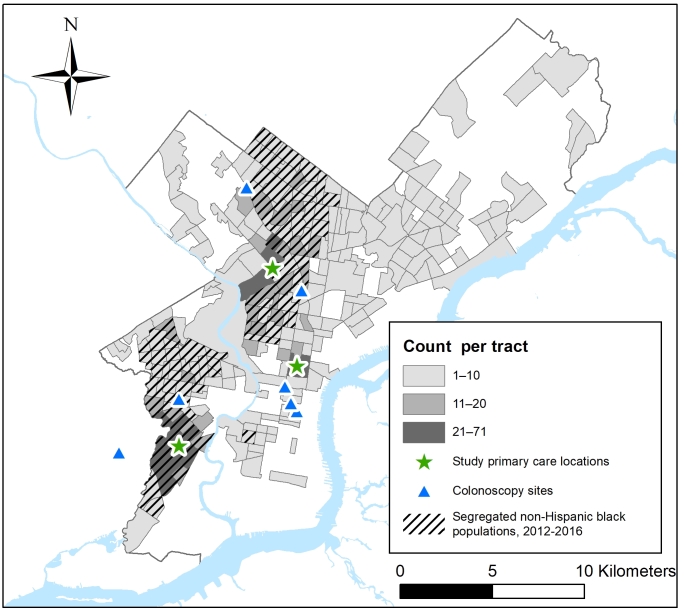Figure.
Number of Family Practice and Counseling Network (FPCN) patients in 2016 for whom colorectal cancer screening was recommended, by census tract of residence in Philadelphia, Pennsylvania; locations of FPCN clinic sites; locations of colonoscopy referral sites; and, for census tracts where patients resided, census tracts with higher levels of African American racial segregation relative to all Philadelphia census tracts. Six of the 7 facilities where FPCN refers patients for colonoscopy are located in Philadelphia, and 1 is located in an adjacent municipality, near the FPCN clinic in southwest Philadelphia.

